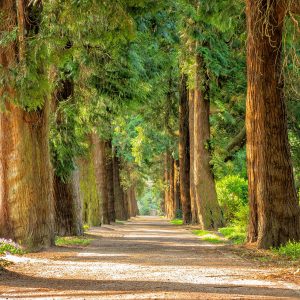COURSE CONTENT
 There are 12 lessons in this module as follows:
There are 12 lessons in this module as follows:
- Introduction to Nature Park Management – the role and scope of nature parks; the importance of indigenous vegetation in nature parks.
- Basic Ecology – the environment, plants and animals; ecosystem concepts.
- Soil Management in Nature Parks – soil characteristics and problems; earthworks.
- Plant Maintenance – basic gardening techniques; natural gardening; plant selection; succession planting; equipment.
- Design of Nature/Wilderness Parks I – collecting site information; preparing concept plans.
- Design of Nature/Wilderness Parks II – drawing the final plan; construction estimates; designing animal enclosures.
- Weed Management – characteristics of weeds; weed control; environmental weeds.
- Pest and Disease Management – management strategies; chemical safety.
- Culture of Indigenous Plants – techniques for establishing vegetation; planting design.
- Tree Management – role of trees in nature parks; tree maintenance plans; pruning and tree surgery.
- Turf Care – turf varieties in nature parks; lawn preparation, establishment and maintenance.
- Rehabilitation: Problems and Solutions – aims and strategies; soil problems and solutions in degraded sites.
COURSE AIMS
On completion of the course you should be able to do the following:
- Explain the importance of the interrelationships between various components of a natural environment within an ecosystem.
- Develop management strategies for soils within a natural ecosystem.
- Develop management strategies for plant maintenance practices, in nature parks.
- Design a nature park, or a section within a nature park.
- Develop management strategies for the control of weed problems in a nature park.
- Develop management strategies for the rehabilitation of degraded sites in a nature park.
WHAT YOU WILL DO IN THIS COURSE
Here are just some of the things you may be doing:
- Differentiate between different categories or types of nature parks.
- Determine thirty living components of a specific ecosystem, studied by you.
- Determine ten non-living components of a specific ecosystem, studied by you.
- Prepare a labelled diagram to illustrate the interrelationships between at least fifteen different components of an ecosystem.
- Explain the possible impact of removing two different specified organisms from a specified ecosystem.
- Explain the potential impact of adding non indigenous organisms, to a specified ecosystem.
- Explain how different soil characteristics can impact upon an ecosystem.
- Describe the physical characteristics of at least three different soils, which are of significant to the stability of their ecosystems.
- Assess aspects of soil dynamics on a site, including: -Topography -Soil life -Susceptibility to degradation -Sunlight (canopy penetration).
- Compare the likely implications of using three different types of fertilisers, including: Benefit to plants -Method of use Environmental impact.
- Explain the use of different soil conditioners including: PH modifiers -Ameliorants -Organic matter.
- Determine the plant maintenance requirements of a specific nature park visited and assessed by you.
- Develop guidelines for the care of new plantations in a nature park visited by you.
- Compare the suitability of three different types of grass cutting equipment, for mowing a specific park.
- Compare the likely environmental impact of different types of pesticides used on a specific site.
- Determine the significance to plant populations, of containment of different outpus, on a specified site, including: -water runoff -chemical spray drift Effluent Pollutants.
- Prepare a plant collection of sixty plants.
- Determine categories of landscape developments which are carried out in different types of nature parks, including: -Wildlife Reserves -Zoos -Sanctuaries -National Parks -Forest Reserves -Vegetation corridors.
- Evaluate the designs of two different sections, of different nature parks, against given criteria.
- Collect pre-planning information for the development of a site, within a nature park.
- Prepare two concept plans for a nature park development, including: Existing features -clear labelling -legend -scale -north indicator.
- Compare features of two nature park concept plans.
- Plan the construction of a landscape development within a nature park, including: -materials lists (types and quantities of materials); Plan of proposed landscape development; -list of manpower and equipment requirements; -a work schedule.
- Estimate the cost of construction in accordance with a specified landscape plan.
- Estimate the cost of maintaining a specified section of a park, for a three month period.
- Explain the impact of weeds on two natural environments in the learners locality, using examples.
- Prepare a weed collection, of twenty different weeds.
- Describe two different weed problems, in two different nature parks.
- Explain five different weed seed dispersal mechanisms, for weed species collected.
- Compare alternative control methods for a specified weed problem.
- Select appropriate control methods for ten different specified weed problems.
- Develop guidelines for weed control, in a nature park inspected by you.
- Develop a management plan to reinstate indigenous flora on a specific site.
- Explain the causes of three specified types of site degradation.
- Describe five different techniques for controlling site degradation.
- Describe five different techniques for repairing site degradation.
- Describe degraded sites at two different natural areas, you inspect.
- Prepare construction details for work to be undertaken in the rehabilitation of a degraded site you inspect.
- Develop a management plan for a degraded site, in a natural area you visit.





